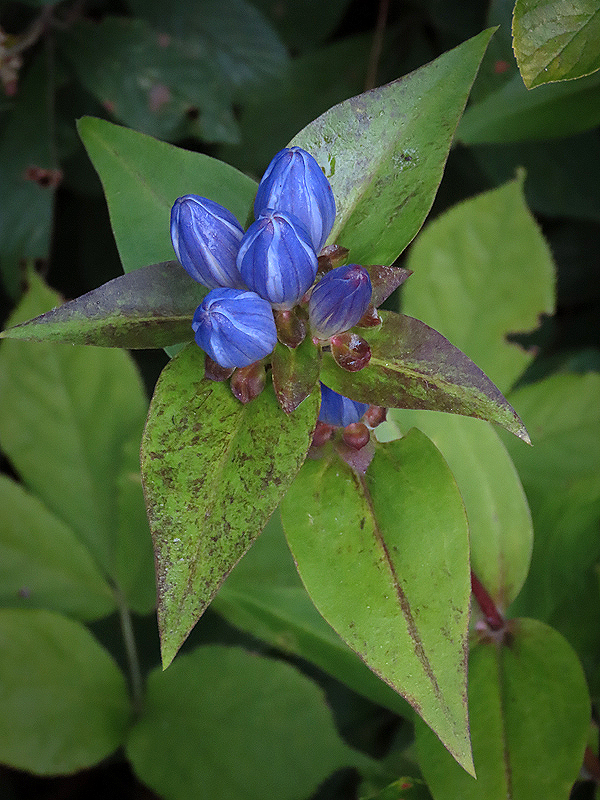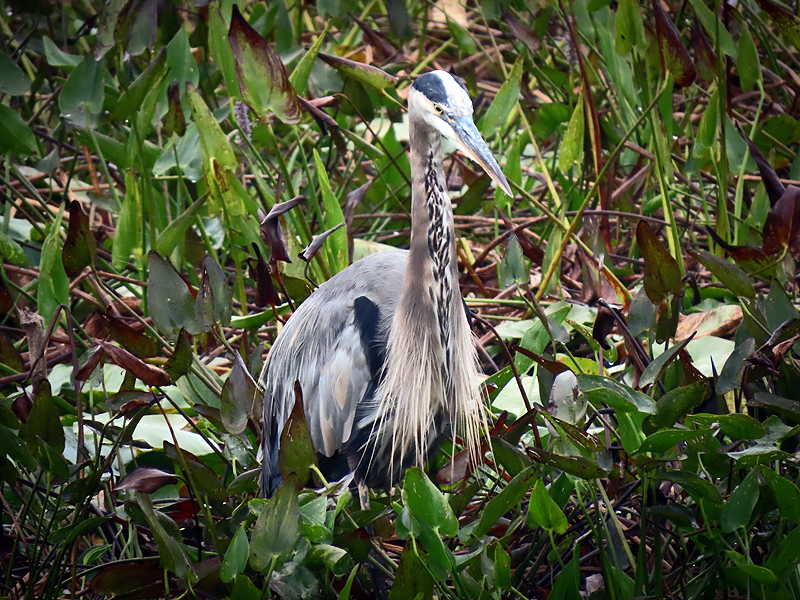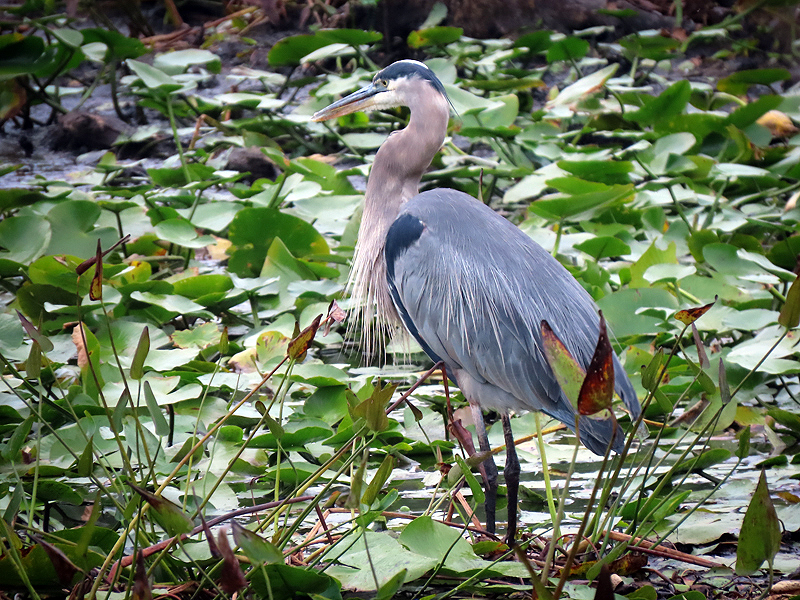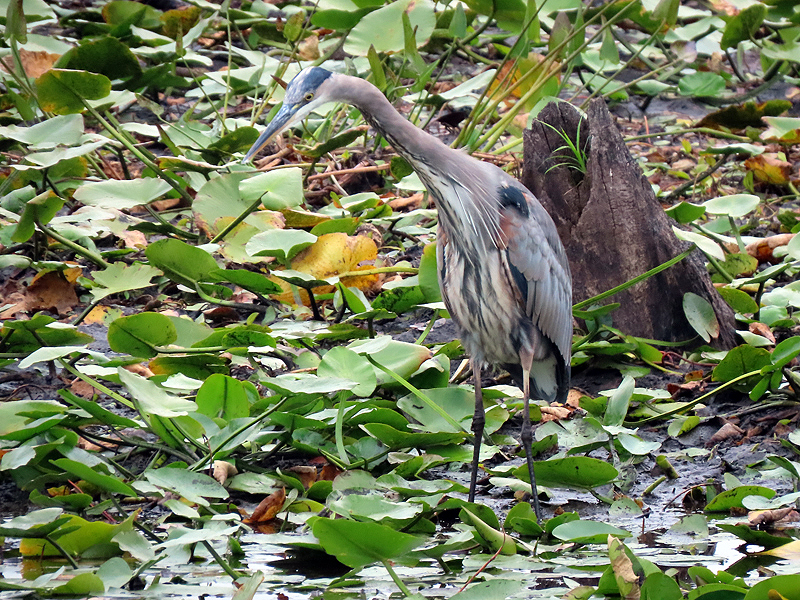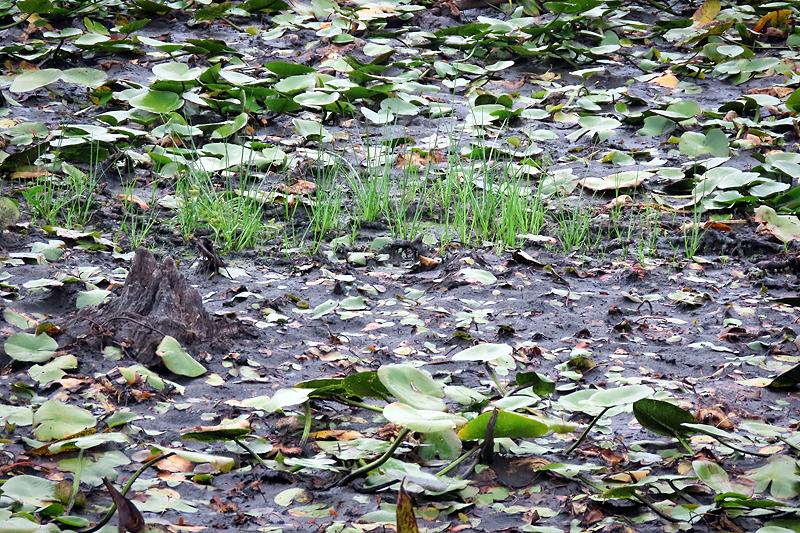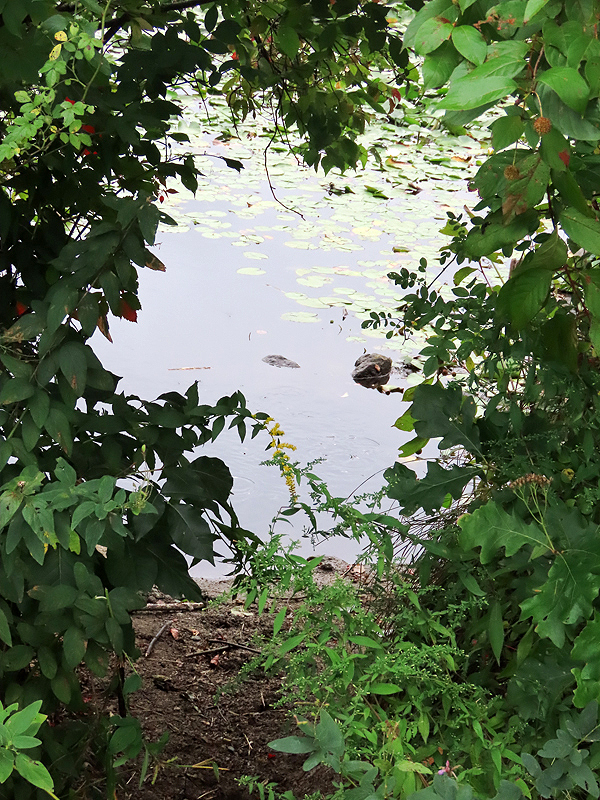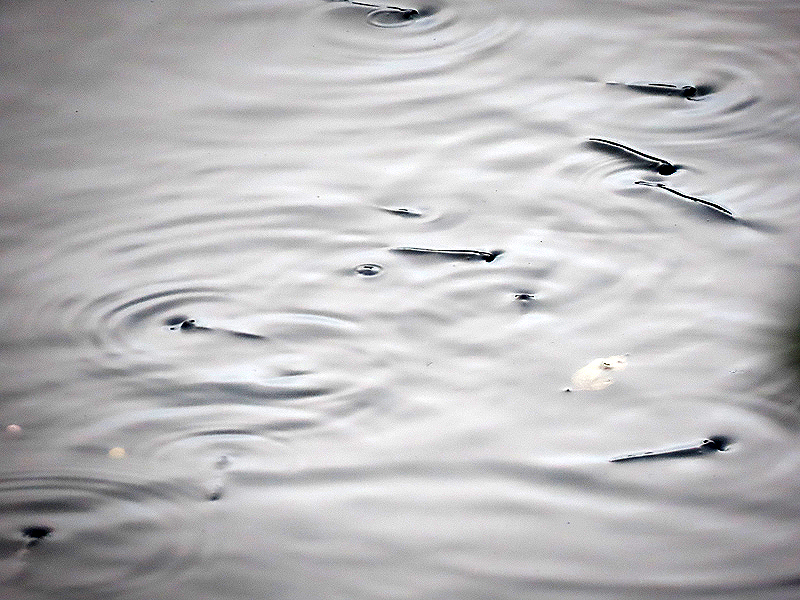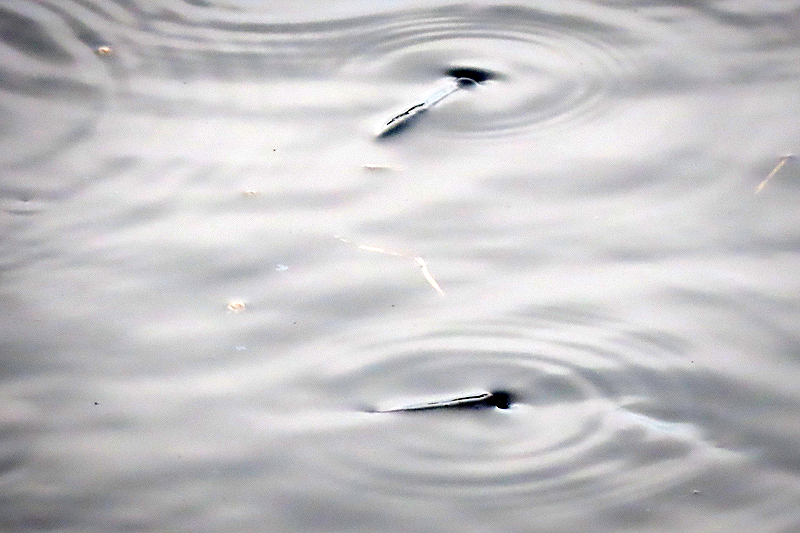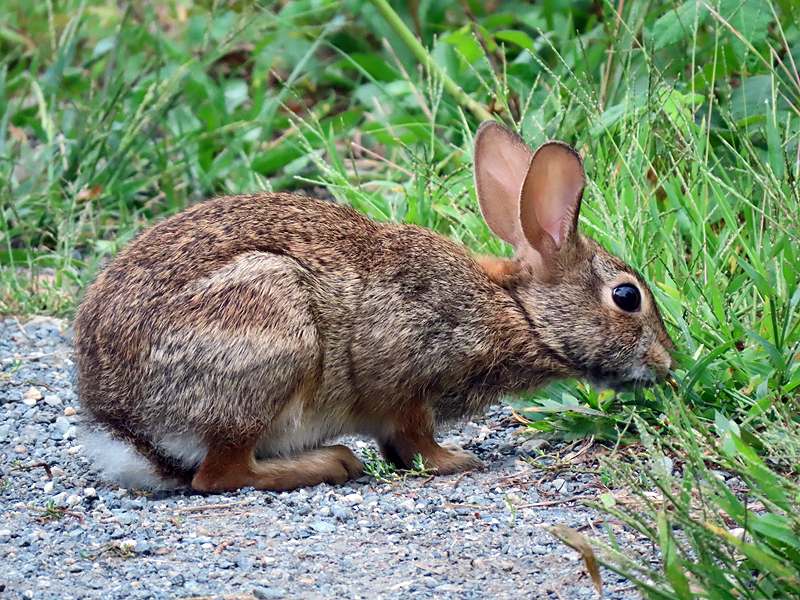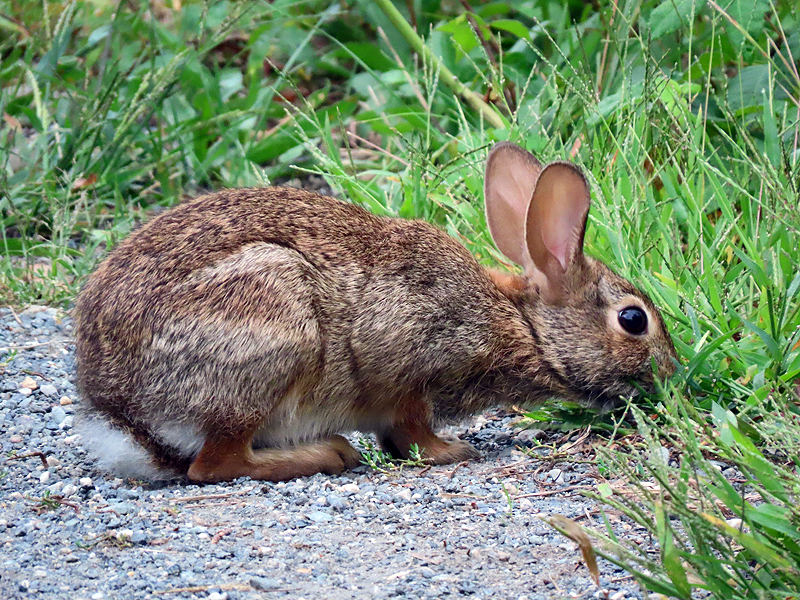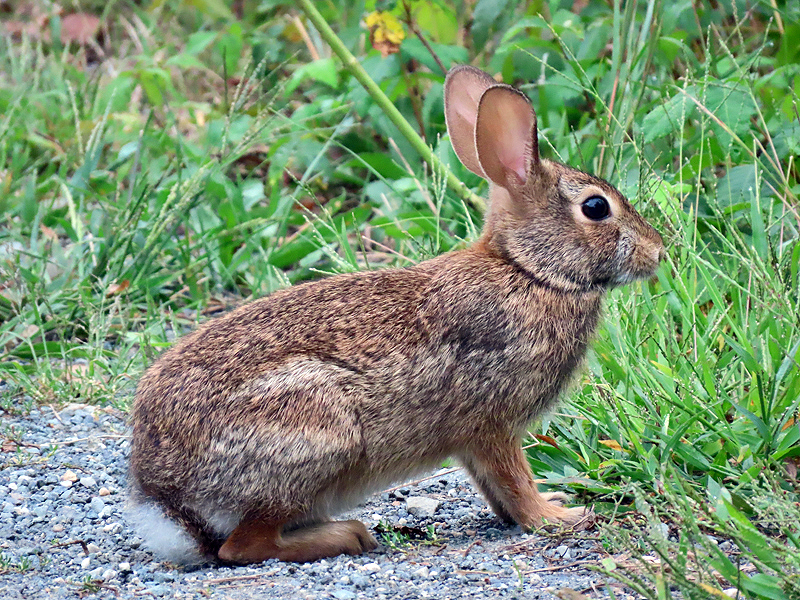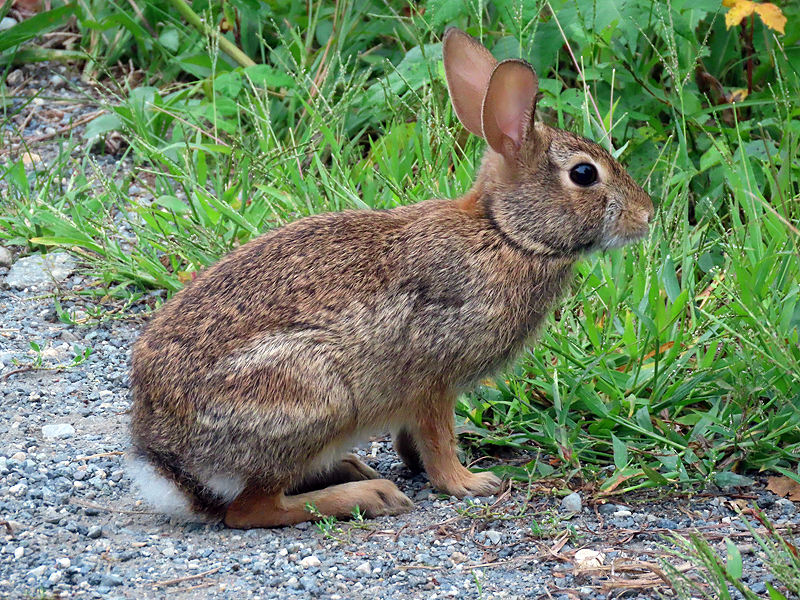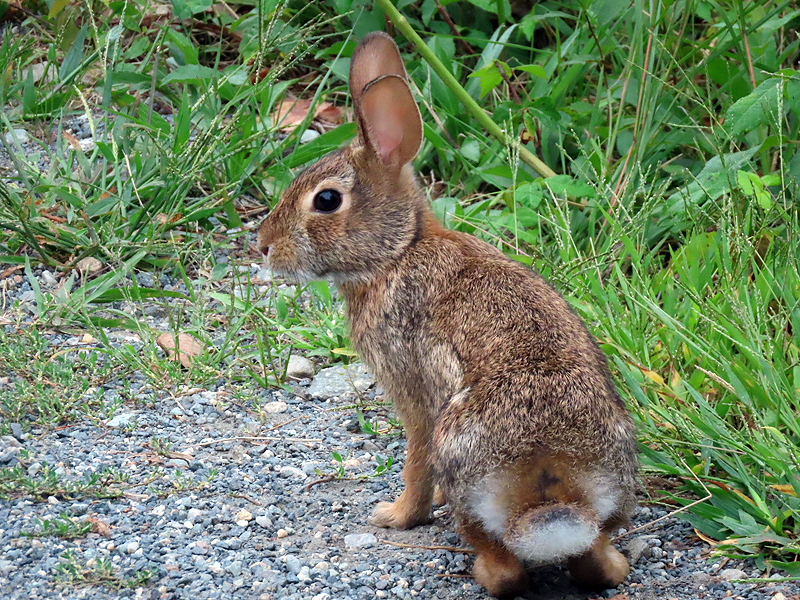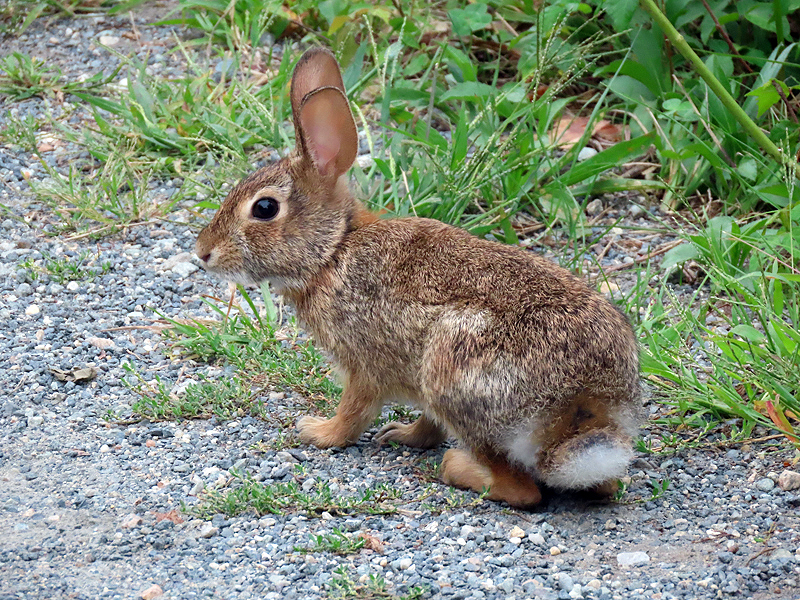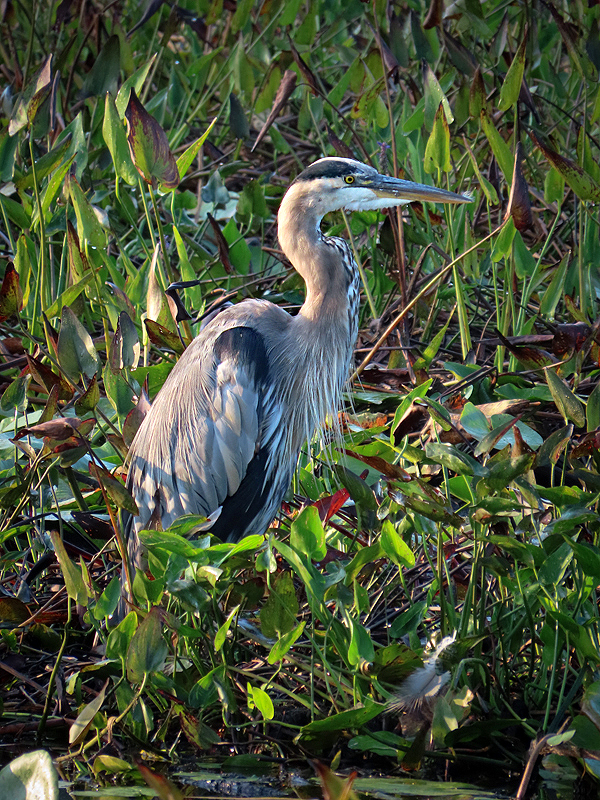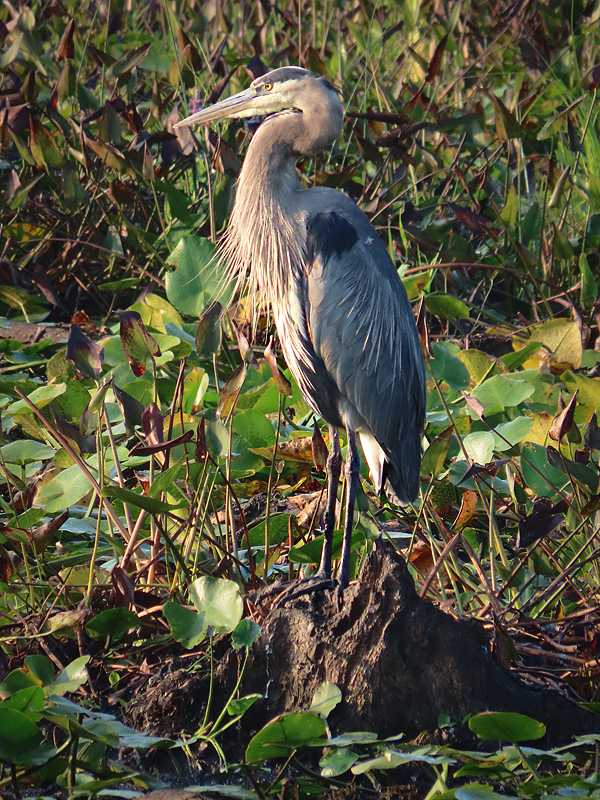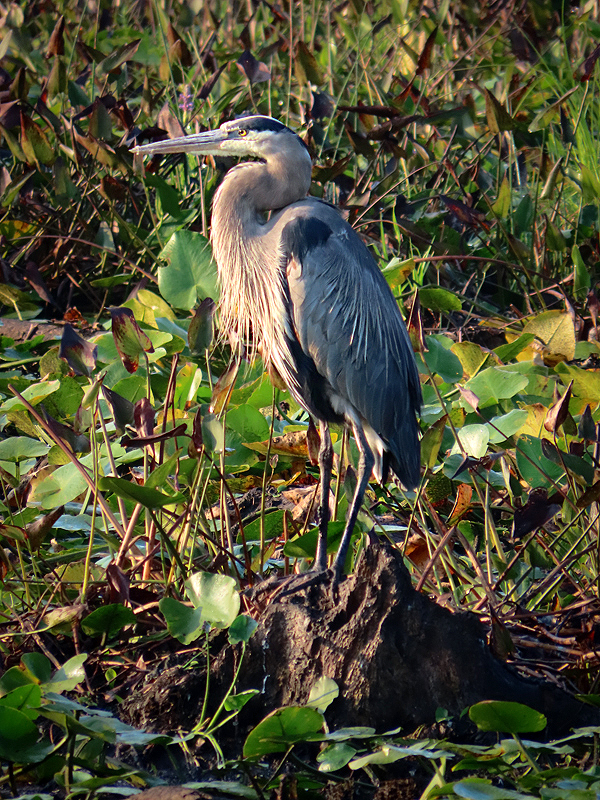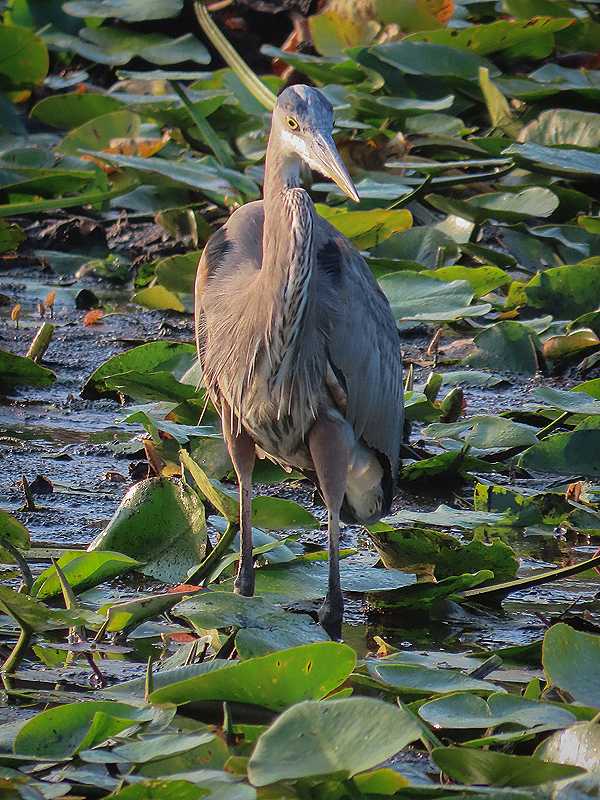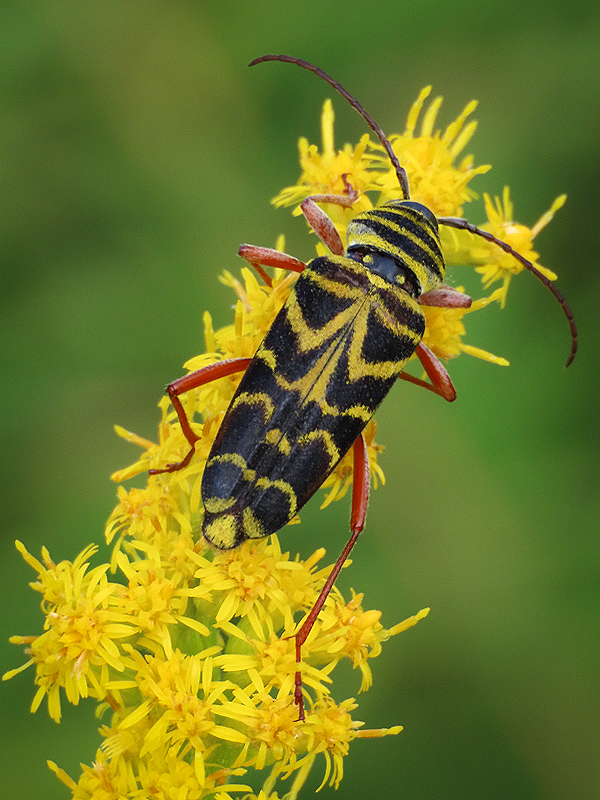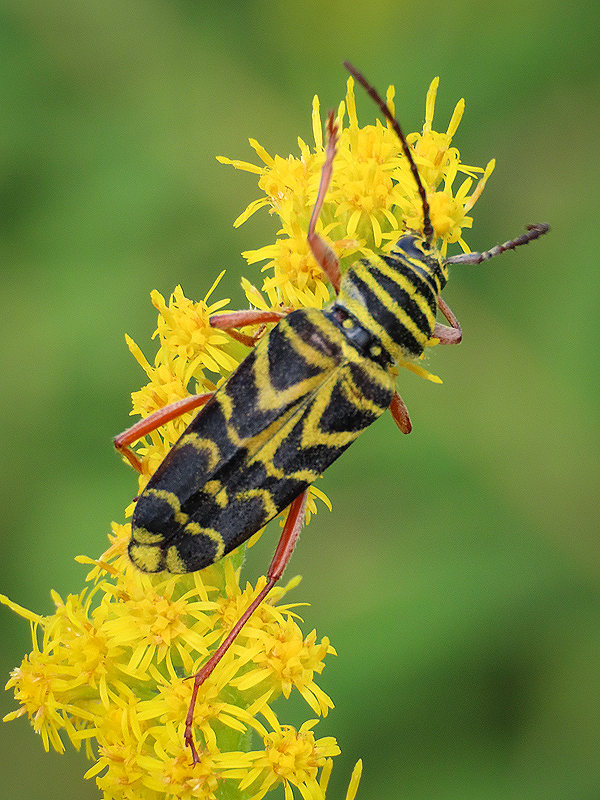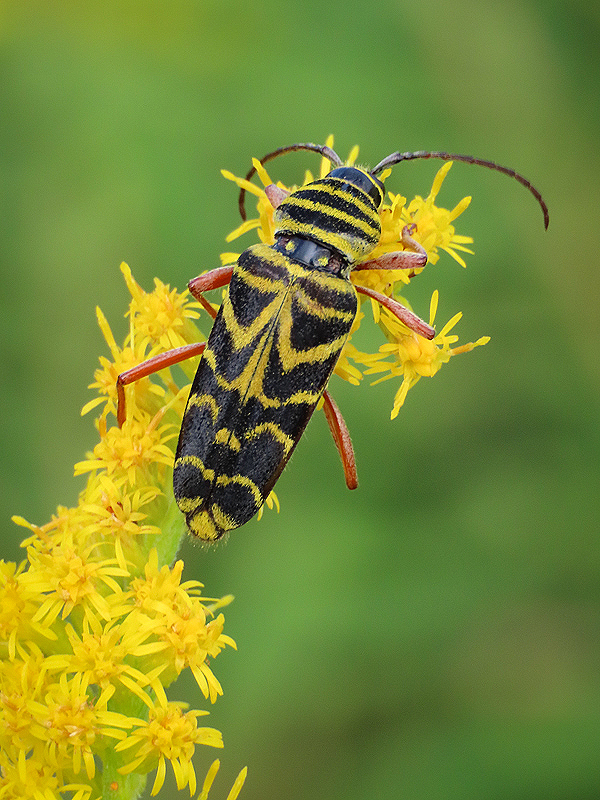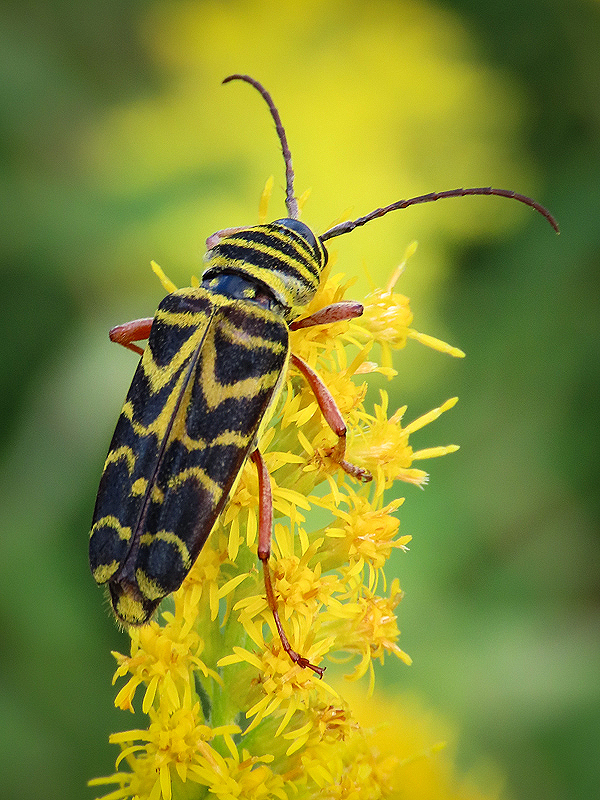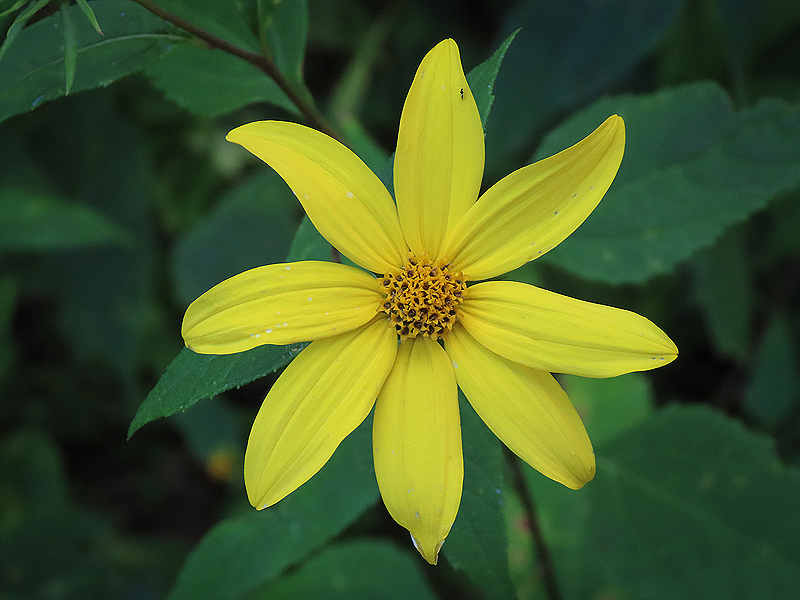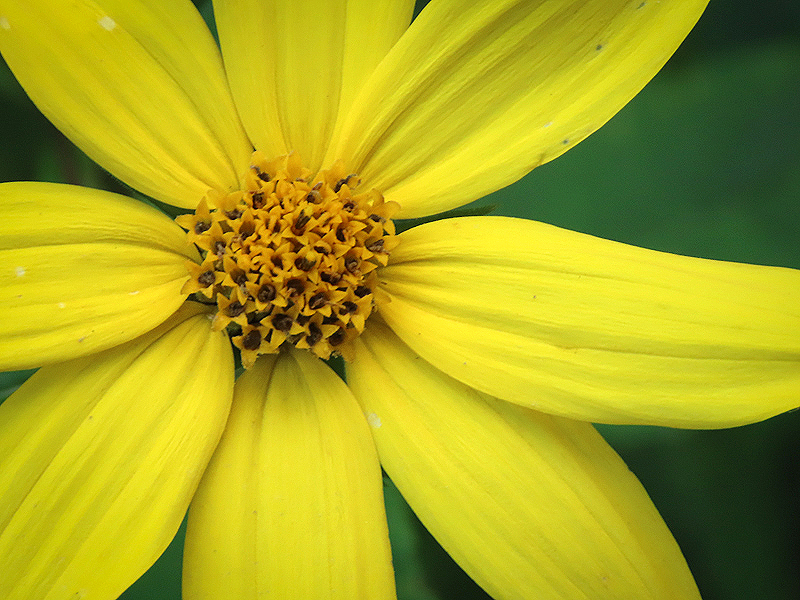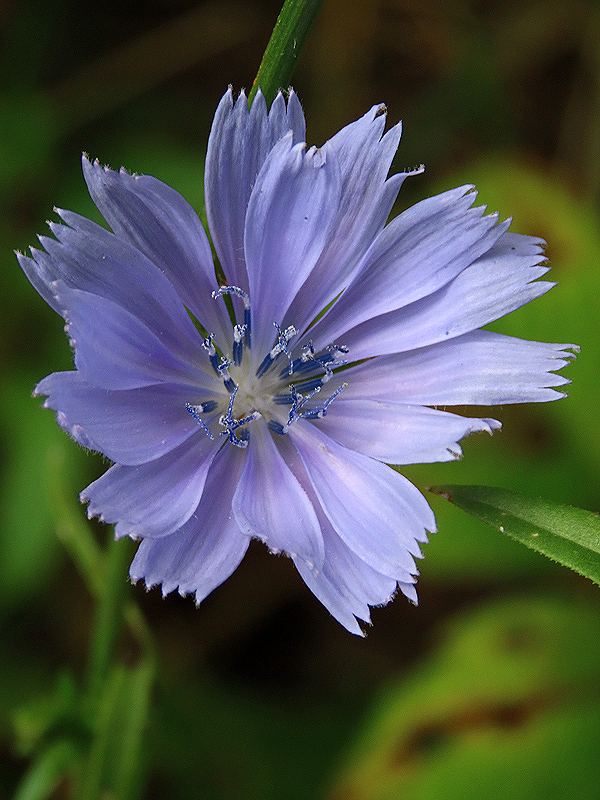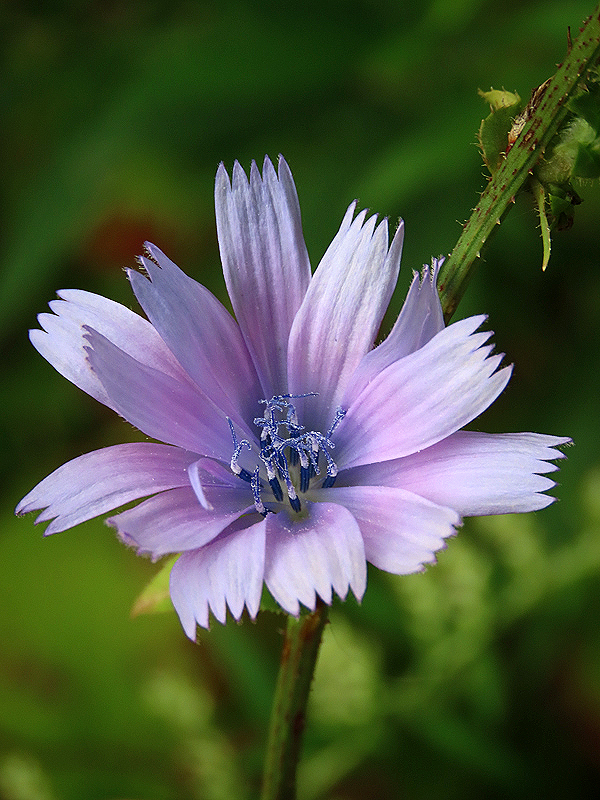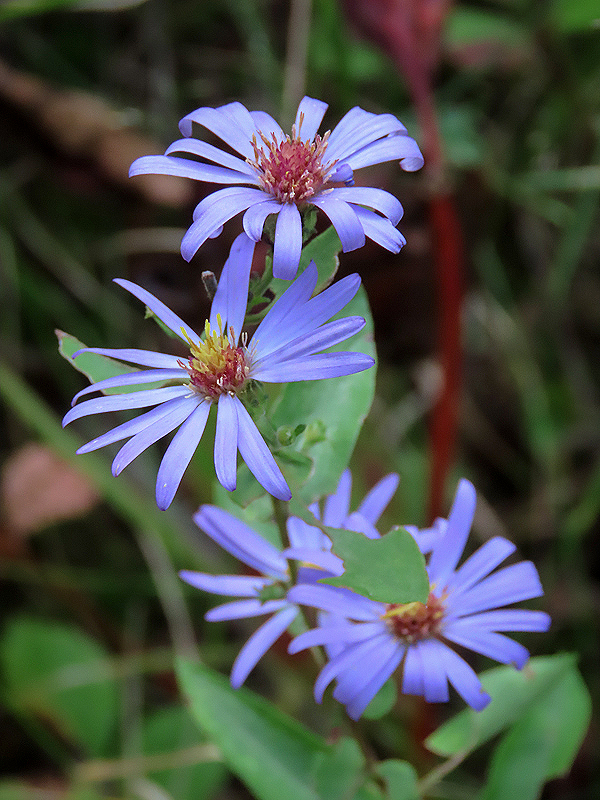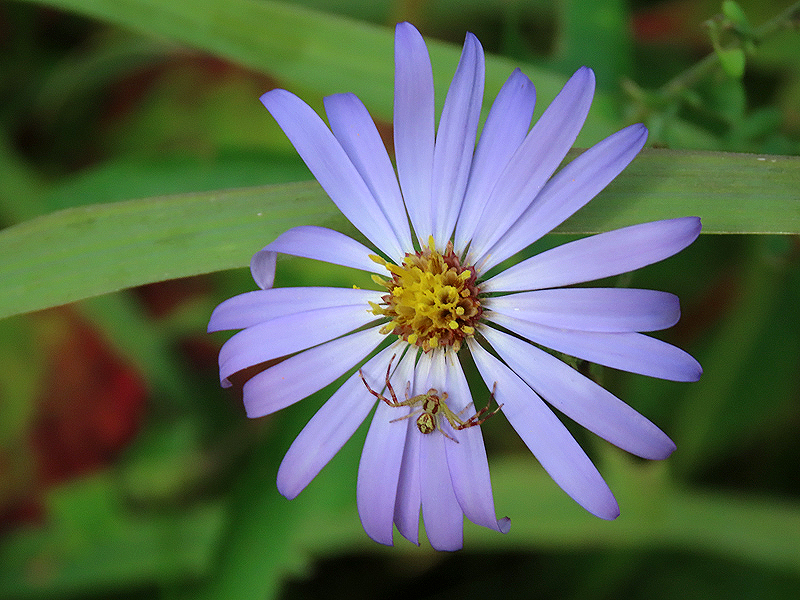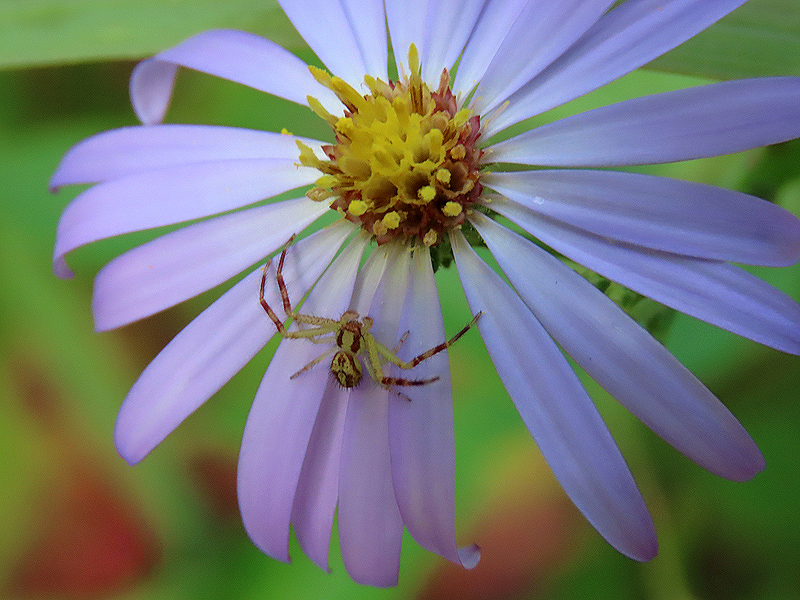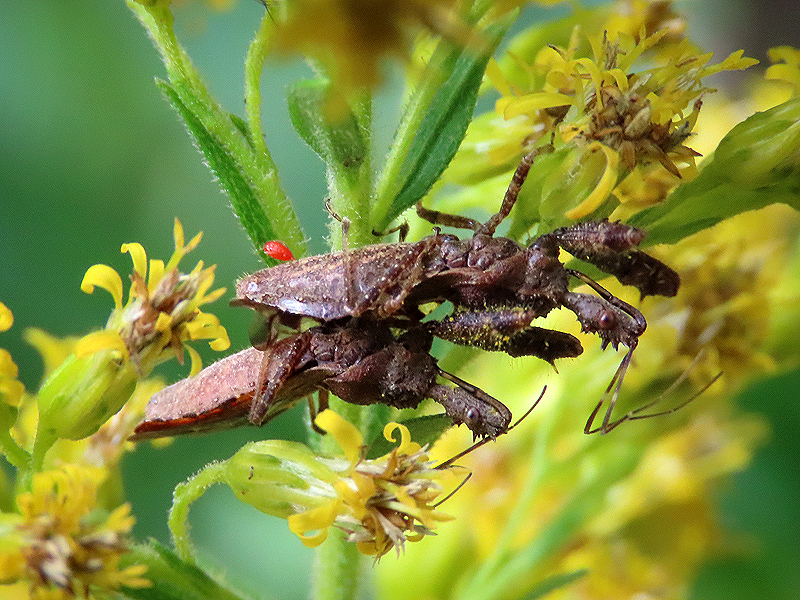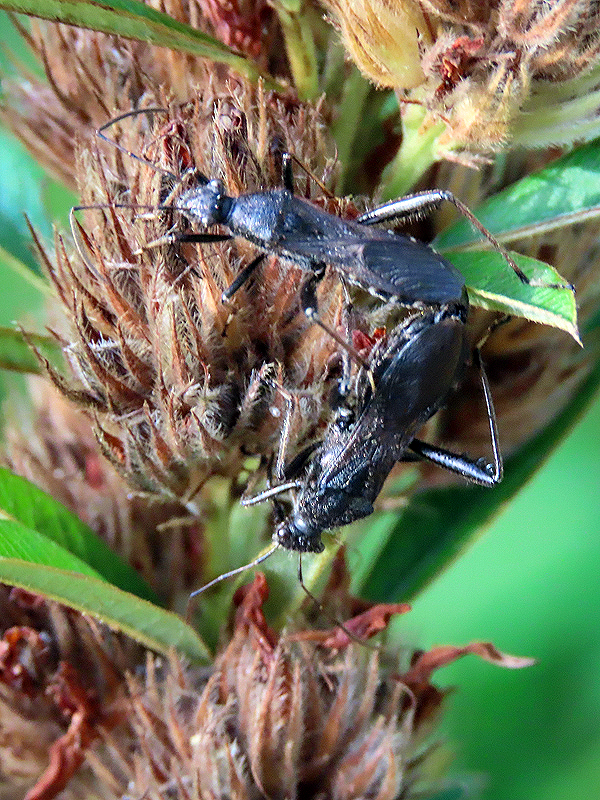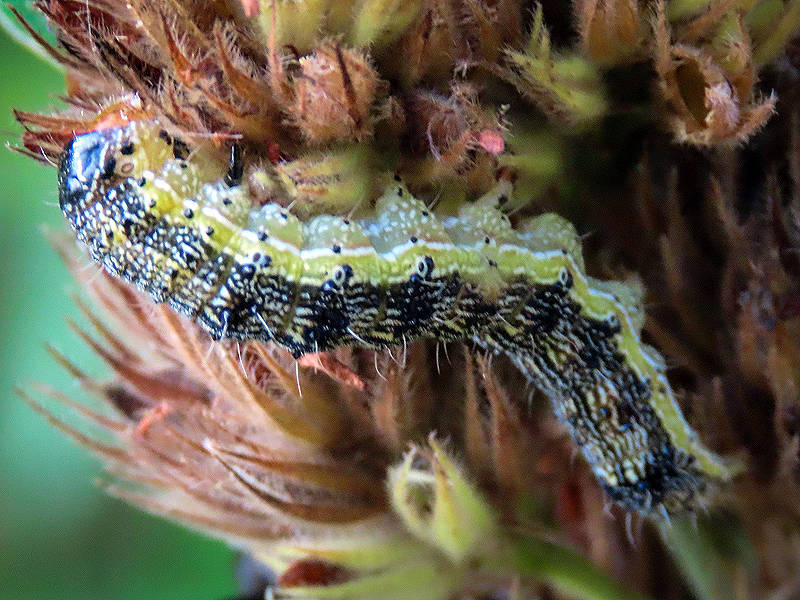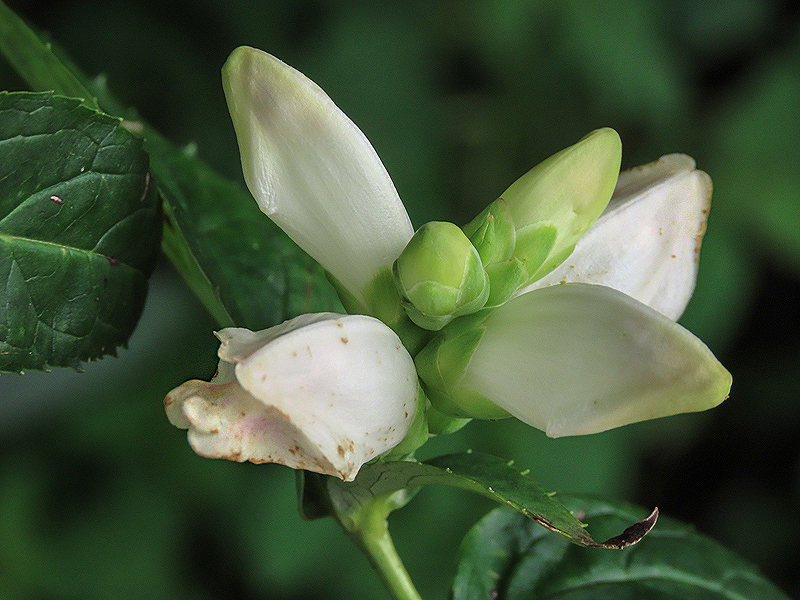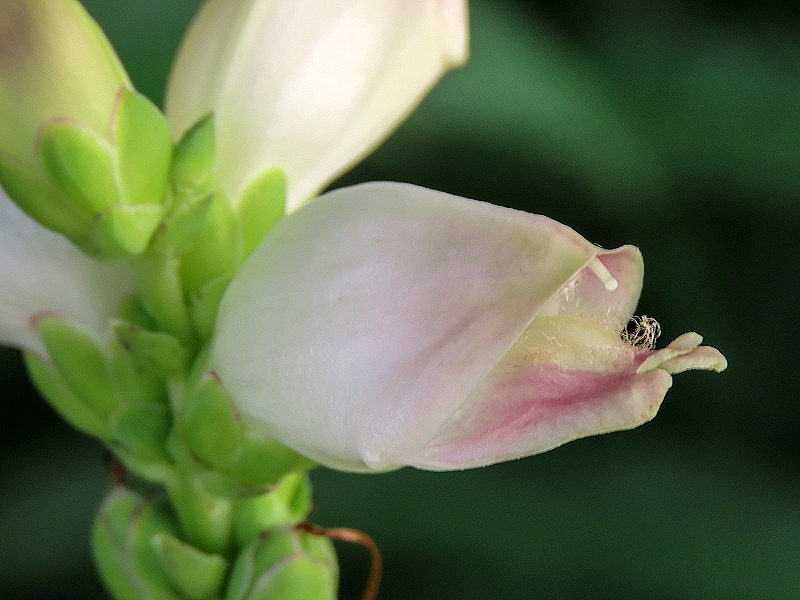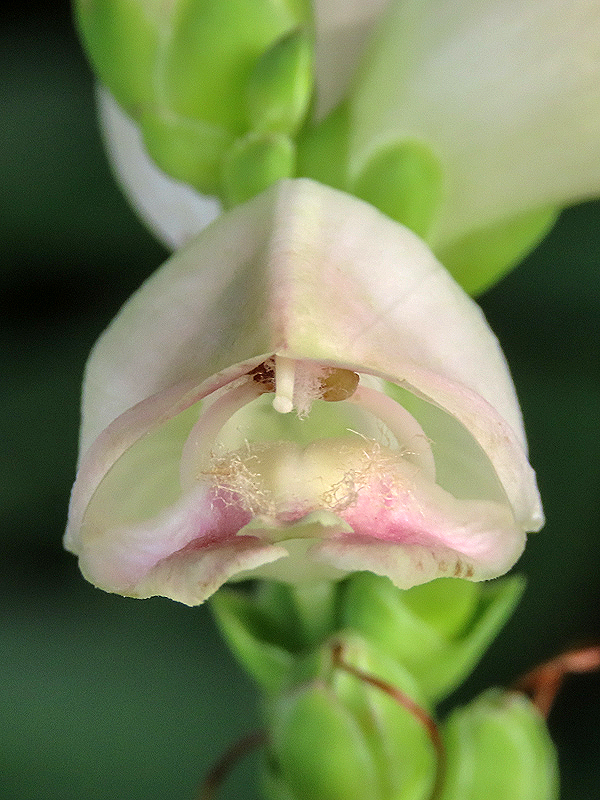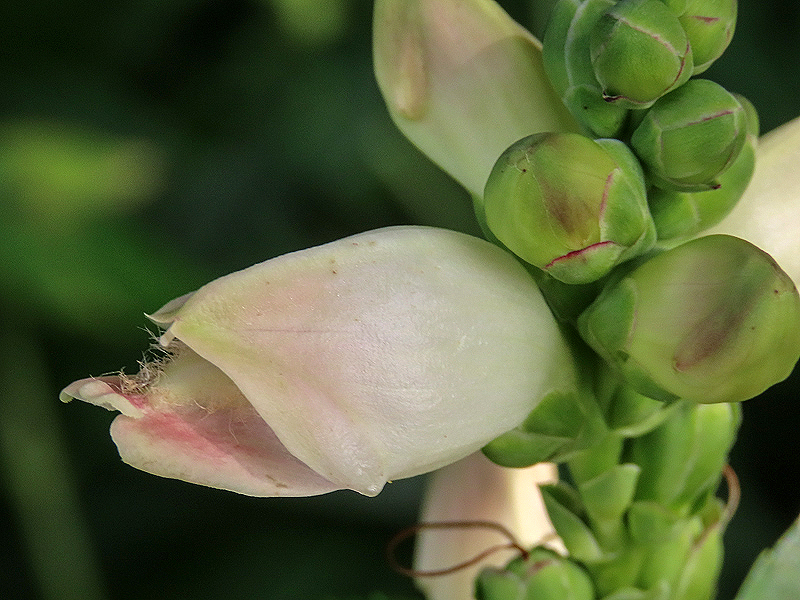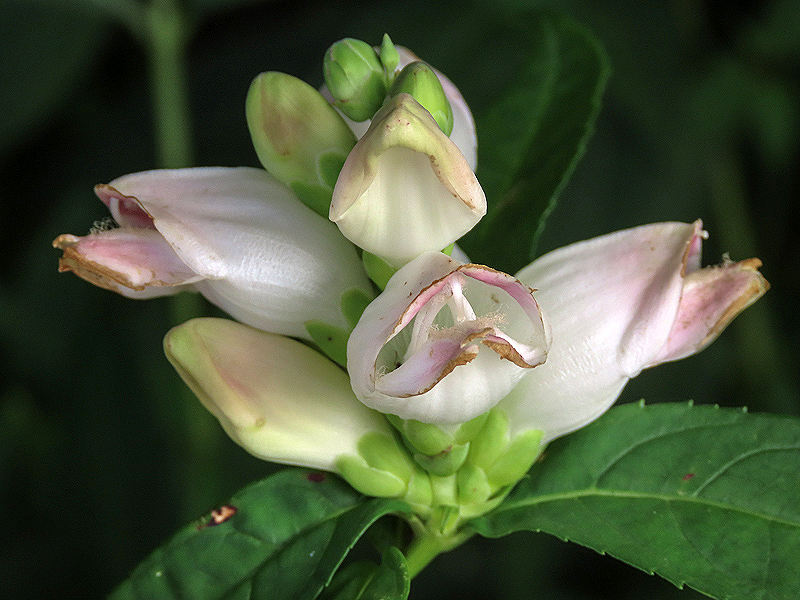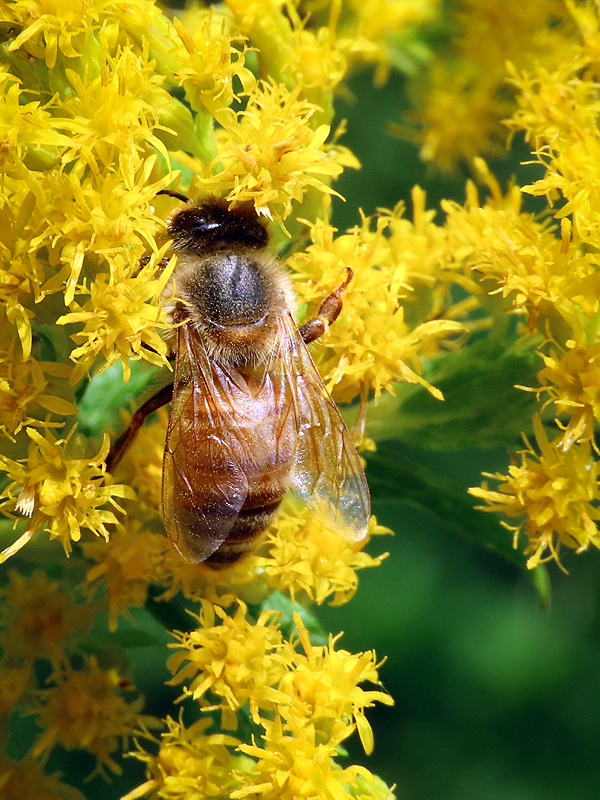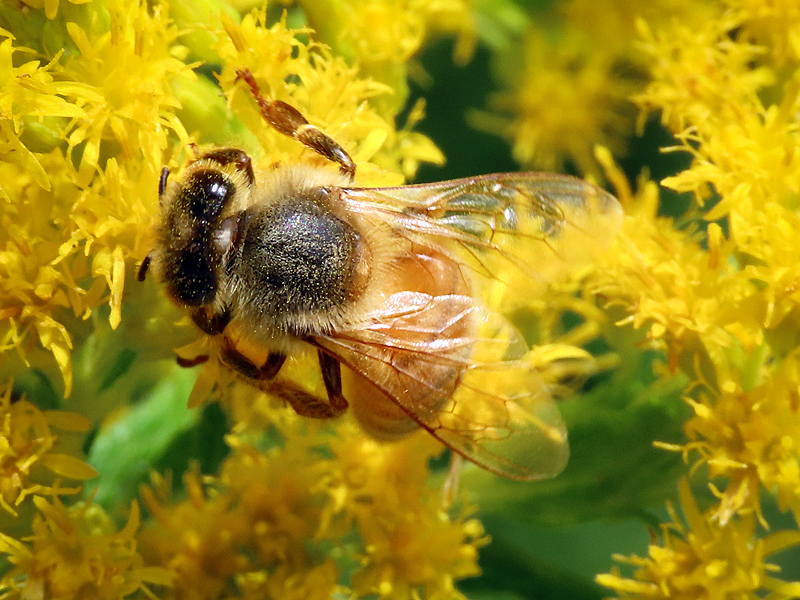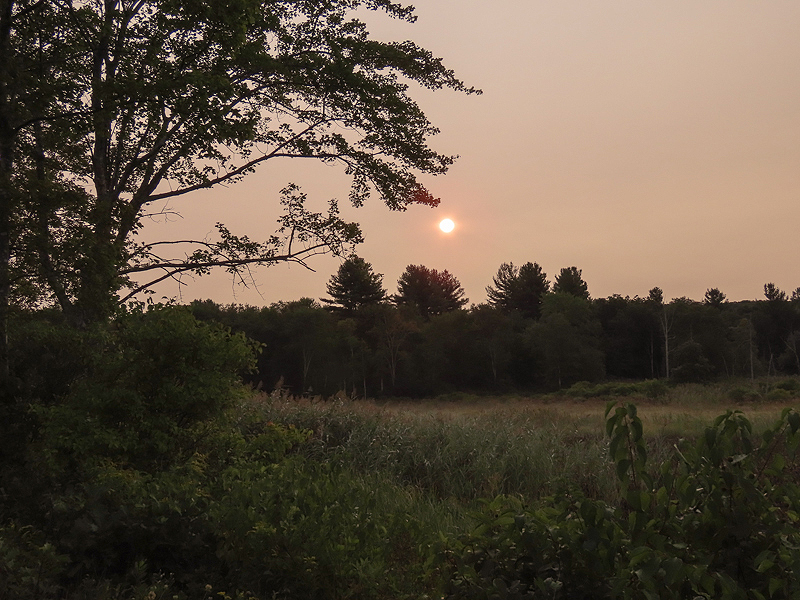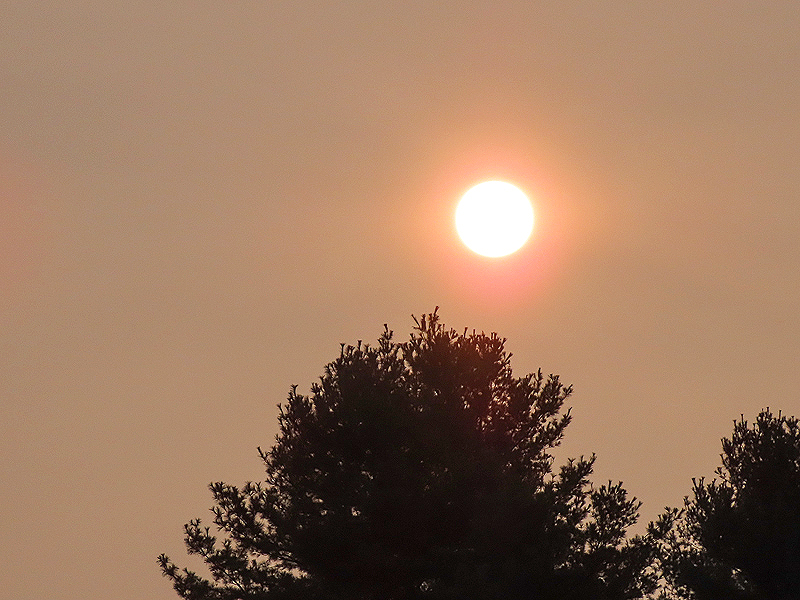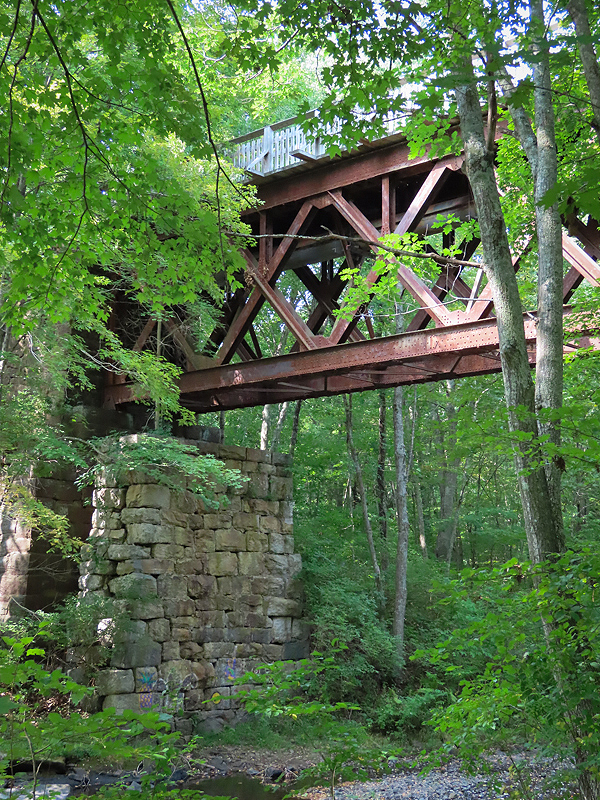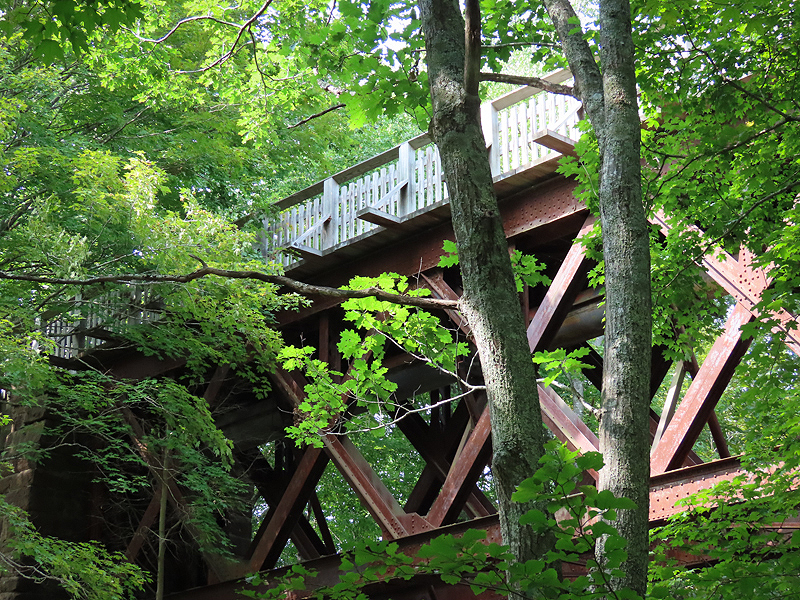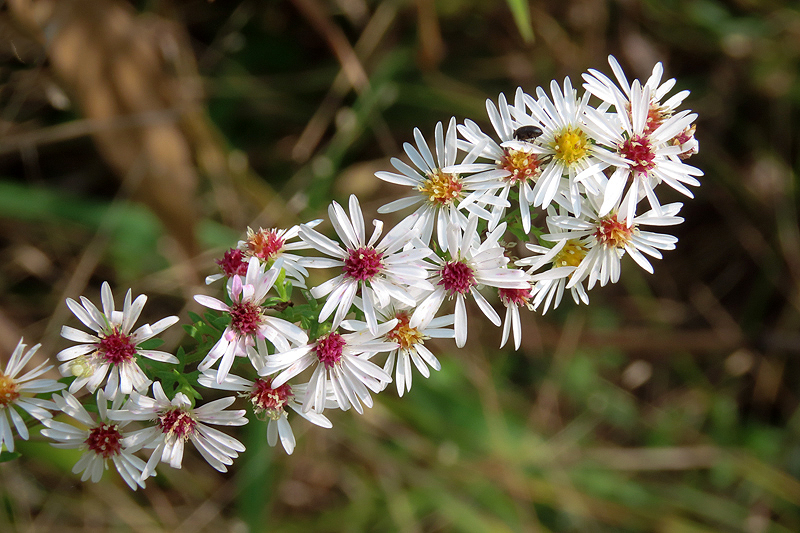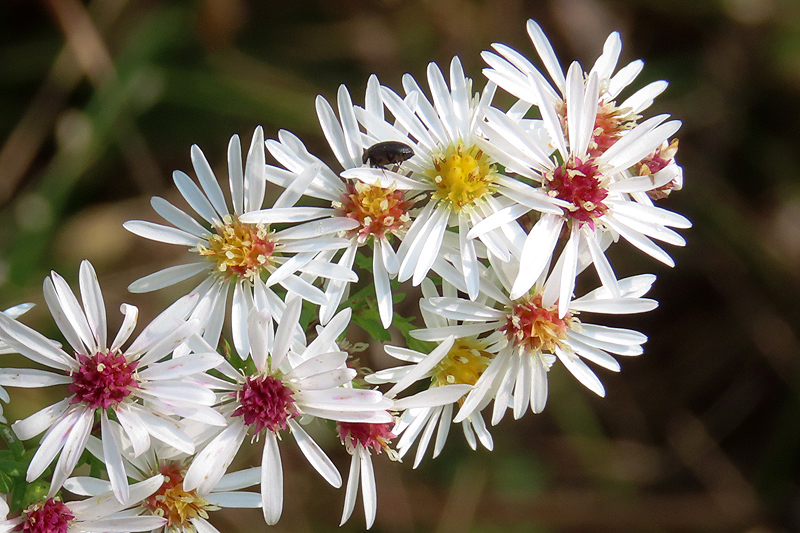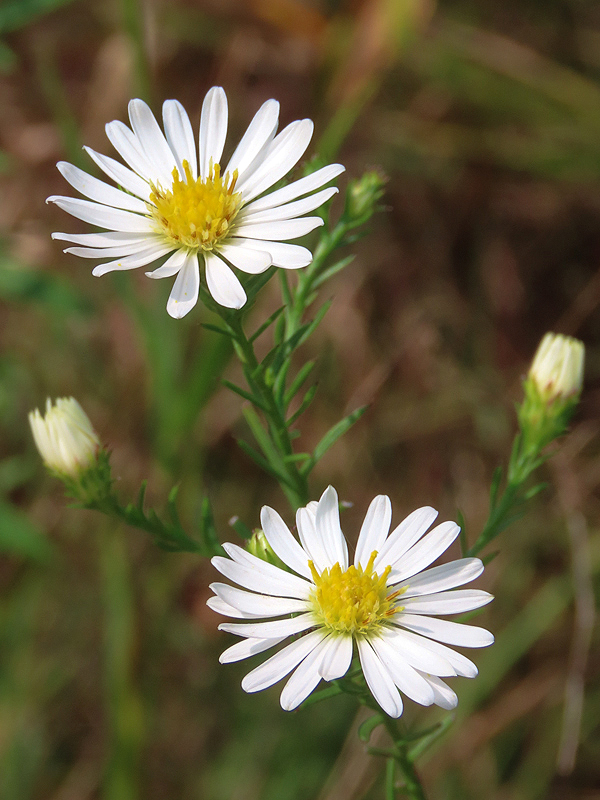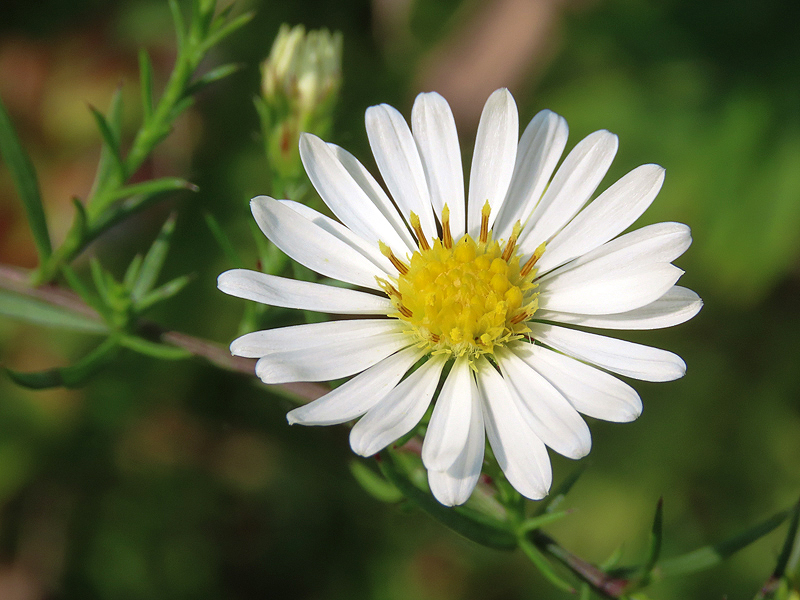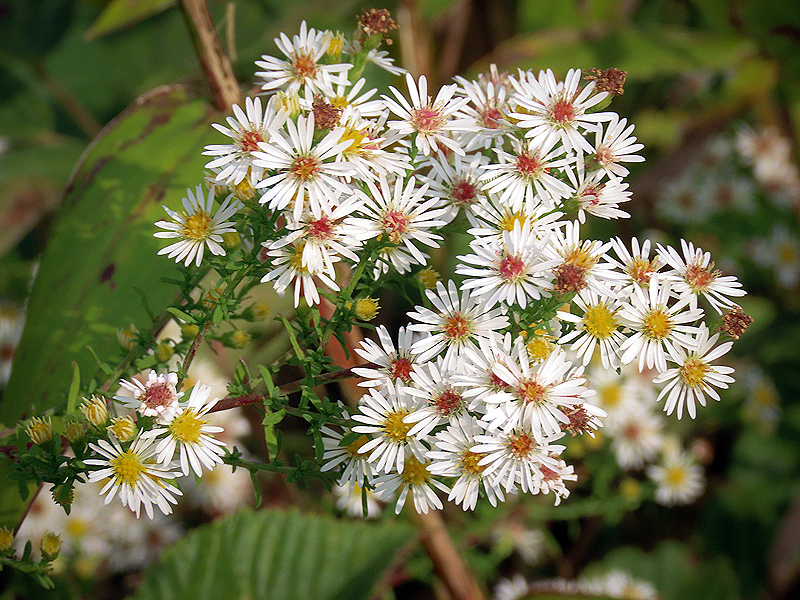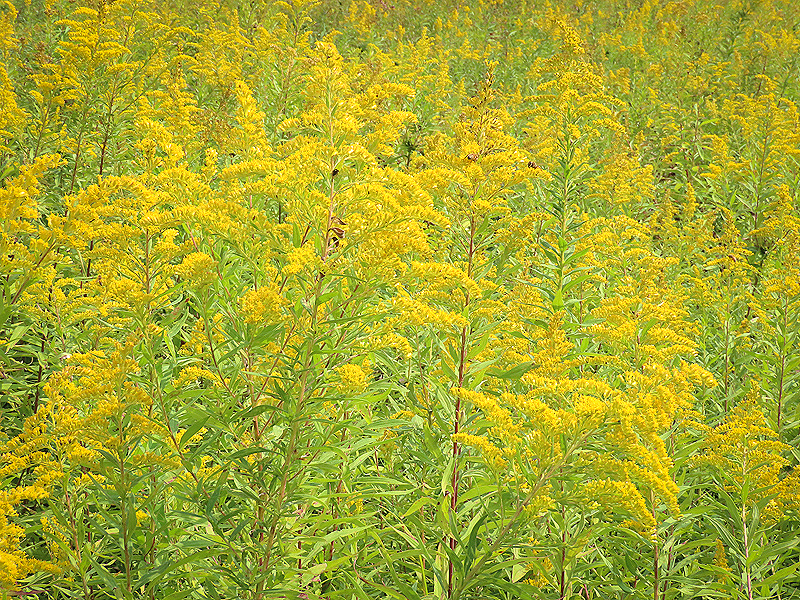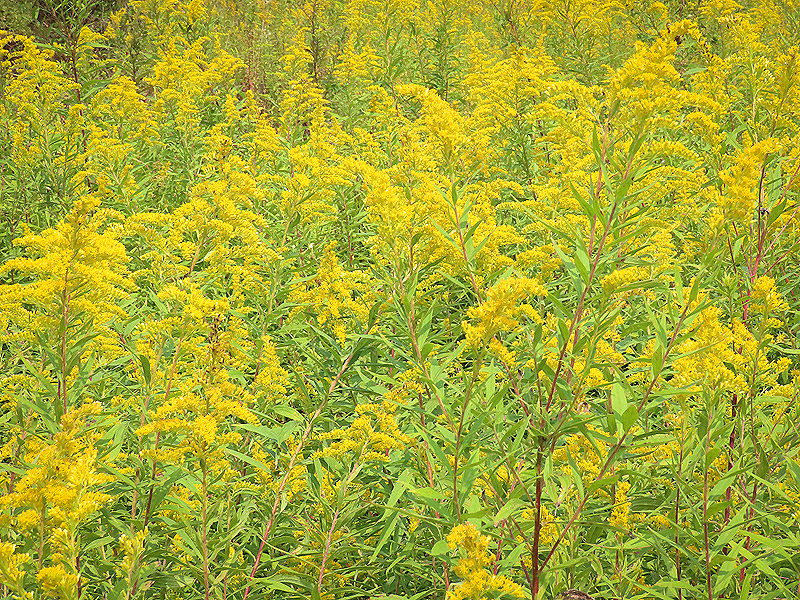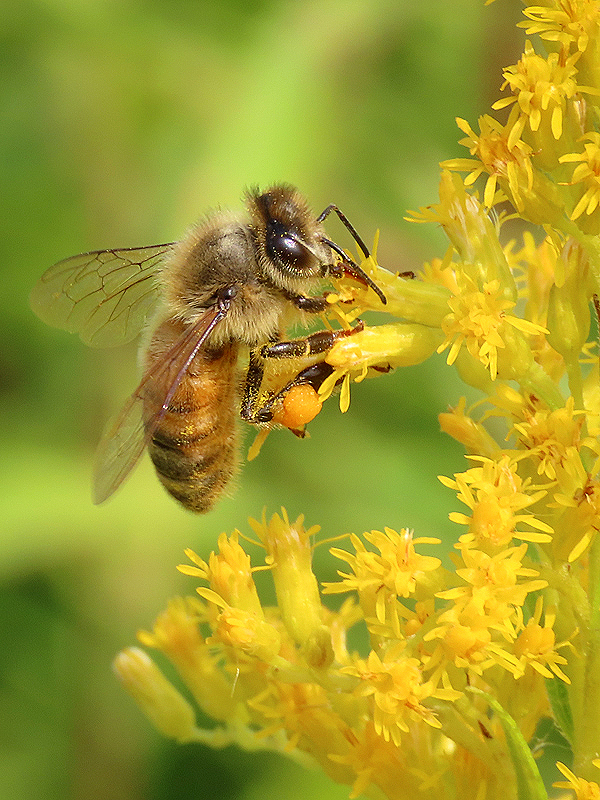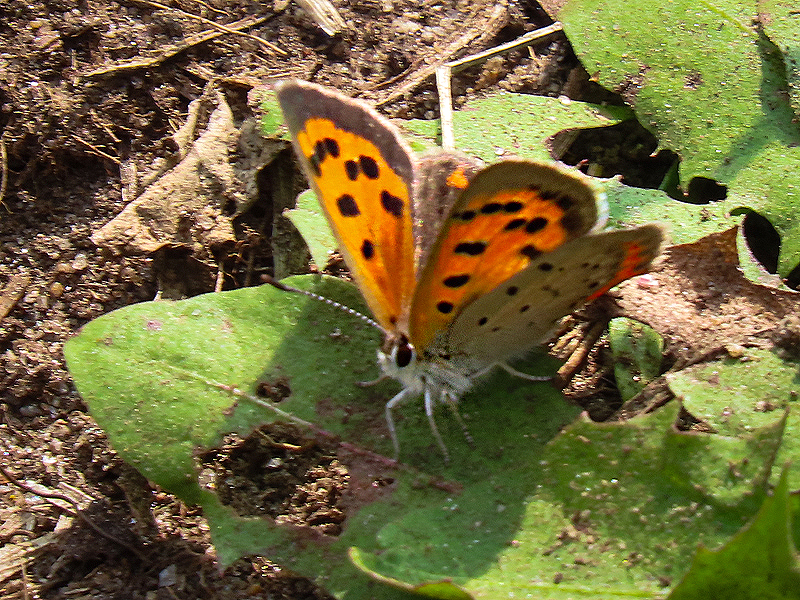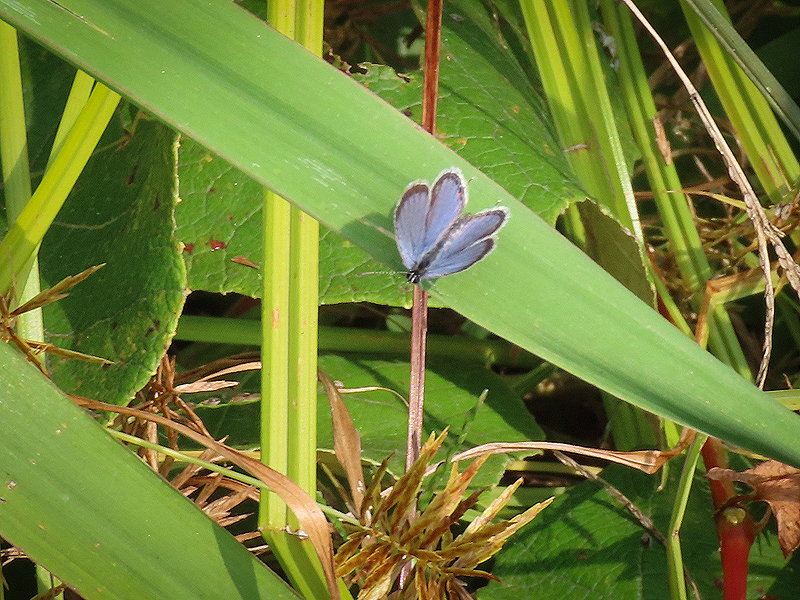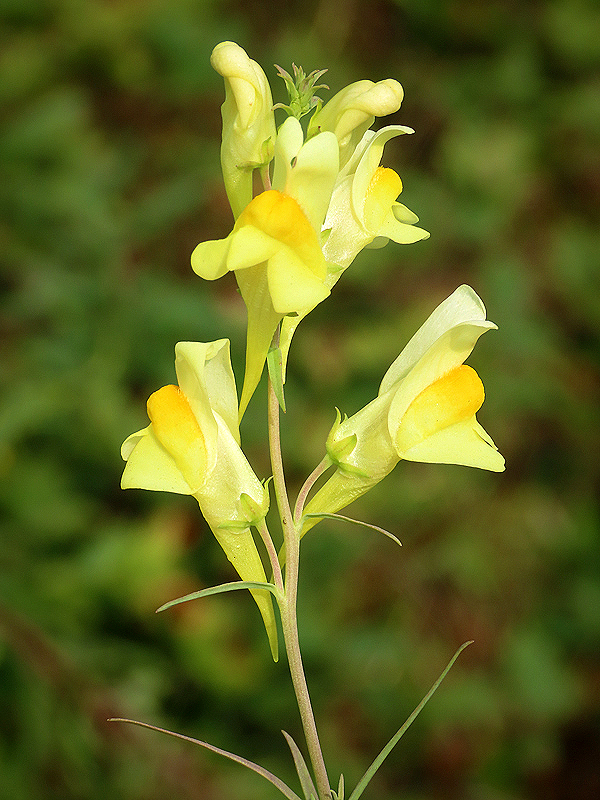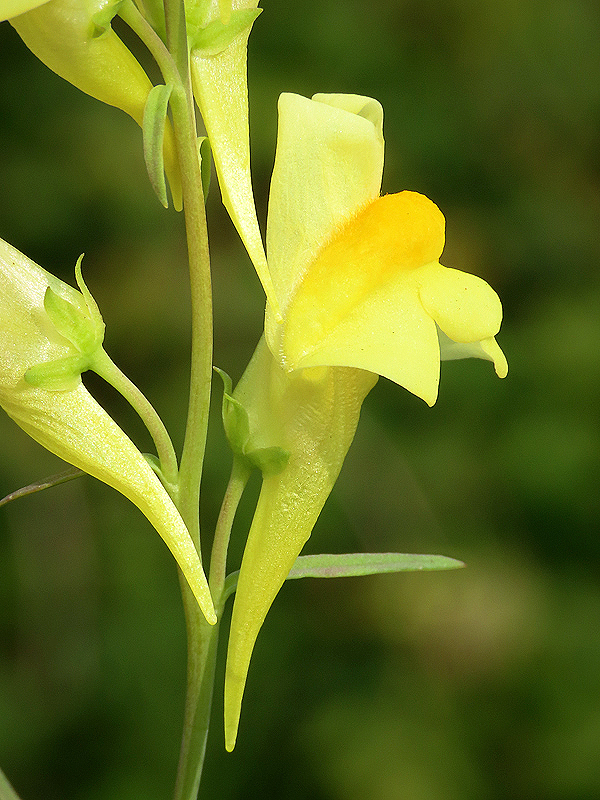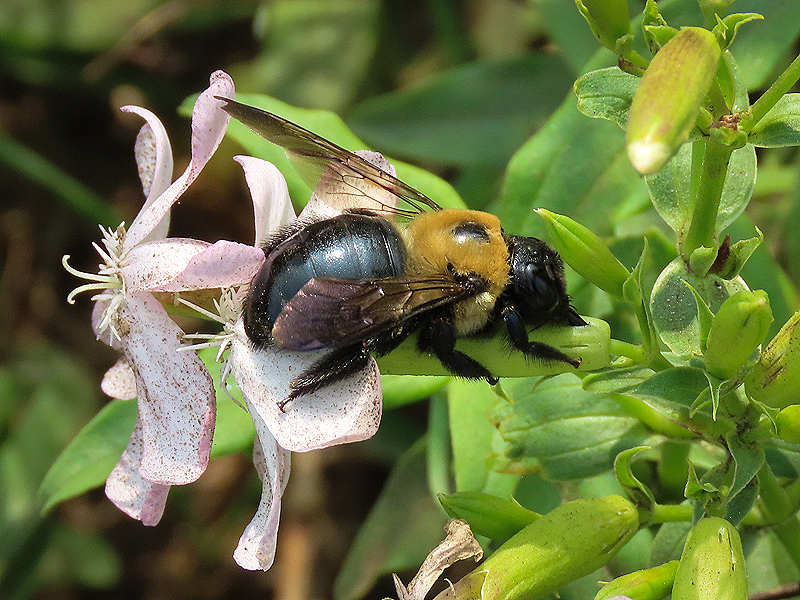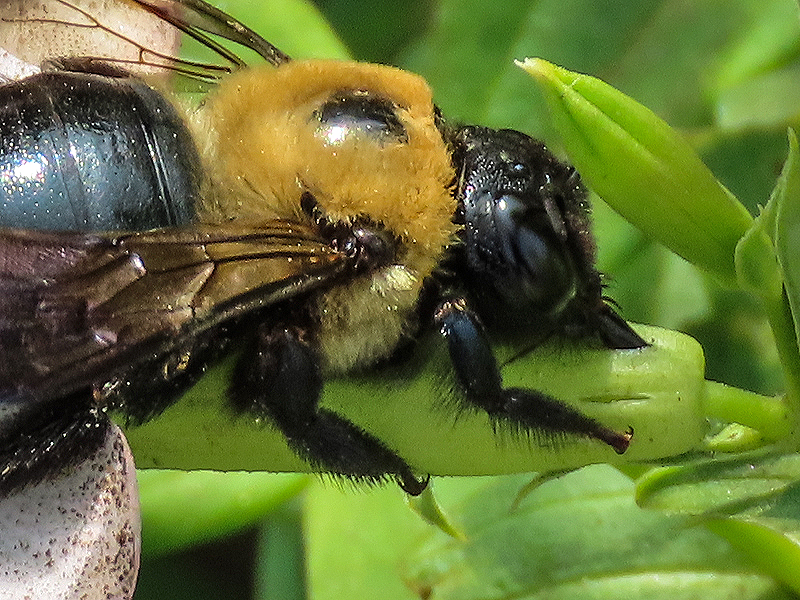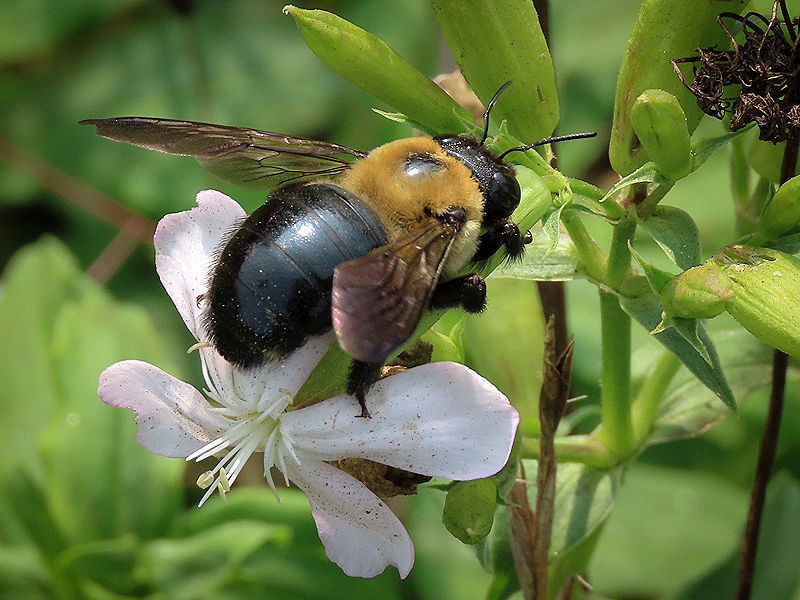Along the Air Line... 2020 - Summer, Part 14 The Air Line Trail in Eastern Connecticut - Stan Malcolm Photos |
HOME: Air Line... 2020 Pages Menu Stan's FlickR Albums |
September 9th. Closed Gentian (Gentiana andrewsii), the only one I've seen in bloom this year. |
The same three Great Blue Herons (Ardea herodias) in roughly the same spots as yesterday morning. Here's 1.... |
...2... |
...and 3. |
In case there was any doubt about how dry the marsh has gotten, grass has sprouted amid the lily pads. |
The only open water I saw on the south side was at this spot near a culvert under the trail. |
Swimming at the surface was a school of little Bullhead Catfish (Ameiurus nebulosus) roughly 3" long. |
(I only know this because in previous years I've seen them in better light where I could make out their barbules.) |
An almost tame Eastern Cottontail (Sylvilagus floridanus). |
|
|
|
|
|
September 11th. The usual three Great Blue Herons (Ardea herodias) in the same spots. One... |
Two... |
|
Three. |
September 13th. A short walk from the Route 2 commuter parking lot west parallel to Route 149. Locust Borers (Megacyllene robiniae) are common on Goldenrod (Solidago sp.) at this time of year. |
|
|
|
Woodland Sunflower (Helianthus divaricatus). |
|
I was surprised to see some Chicory (Cichorium intybus) blooming so late in the day and season. |
Another flower nearby with a distinct purple cast. |
Several species of Aster in bloom. This and the next flower appear to be species of Symphyotrichum. |
Aster with Crab Spider (Family Thomisidae, Mecaphesa sp.). |
Males have large paddle-shaped pedipalps. |
Two Assasin Bugs (Family Reduviidae) and a bright orange phoretic mite. |
A mated pair of Broad-headed Bugs (Alydus eurinus) on Bush Clover (Lespedeza sp.). |
A Sun Moth (Family Noctuidae; Subfamily Heliothinae; probably Corn Earworm Helicoverpa zea) also on Bush Clover. |
September 14th. At Cranberry Bog in East Hampton, Turtlehead (Chelone glabra). |
|
|
|
The flowers age quickly. |
Honey Bees (Apis mellifera) busy working the Goldenrod (Solidago sp.) |
|
September 15th. High smoke from the west coast fires is coloring the sky mornings and evenings when the sun is low. |
|
An afternoon visit under the Blackledge River Bridge, leading to a large open field. |
Look between the tree trunks and you can see the large sewage pipe leading from Colchester to the East Hampton treatment facility. |
Three species of Aster. All Symphylotrichum species I think. |
|
|
|
|
Lots of Goldenrod (Solidago sp.). |
Not many butterflies though. In addition to the two pictured below, I saw a Clouded Sulphur and a Viceroy. |
Honey Bee (Apis mellifera). |
This is one of only a couple of places where I can reliably find American Coppers (Lycaena phlaeas). |
A male Eastern Tailed Blue (Everes comyntas). |
Butter-and-eggs (Linaria vulgaris). |
|
An Eastern Carpenter Bee (Xylocopa virginica) "stealing" nectar from Bouncing Bet (Saponaria officinalis). |
They slit the base of the flower to extract nectar, rather than entering past the stamens. (You can see a slit made by a previous bee.) |
|
